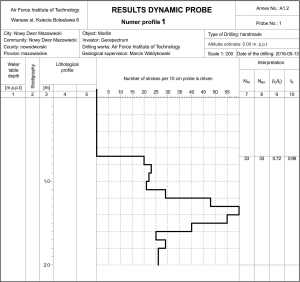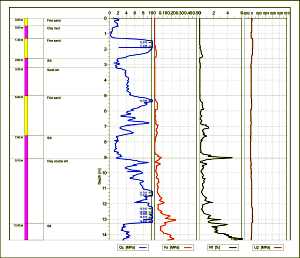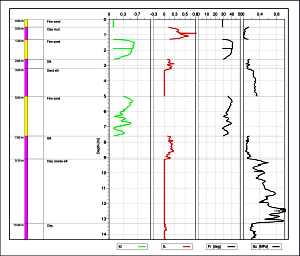Main page | Knowlage base | Geotechnics | Sounding
SOUNDING
Sounding is a field method, that consists on the pressing, drilling or screwing into the ground of a properly calibrated tip and by correlations to determine the full spectrum of the soil parameters.
We can distinguish the following types of probes:
- Dynamic probes,
- Static probs.
Dynamic sounding
Dynamic soundings by correlations can be used to determine state of the ground. Dynamic soundings can be divided based on probes used to determine the degree of compactness of non-cohesive soils (DPL, DPM, DPH, DPSH probes), and using the appropriate tip can be converted to an SVLT probe to determine shear strength especially in cohesive soils, and probes SPT used to determine the strength and deformation of non-cohesive soils and the type and condition of cohesive soils.
Static sounding
CPT, SCPT, CPTu static sounding is a field in-situ method that allows to measure the entire spectrum of soil parameters like: leading ID and IL (IC) parameters, shear strength under no-drain conditions, friction angle and compressibility modulus. Measured parameters are: resistance on cone, surface friction and pore pressure.
The undoubted advantage of CPT probes is the continuity of measurement and the conduct of in-situ research, ie in conditions where the soil is naturally occurring. CPT probes are in most cases conducted with an electric cone with a pore pressure measurement. The accuracy of this measurement is 1 cm. CPT surveys are the only field method that can replace expensive and long-term laboratory tests and limit the drillings. Particularly effective is the probing in low-strength soils and in determining the range of low-bearing, non-bearing and organic soils. It should be emphasized that the CPT is a widely used method for the identification of the soil, and the determination of soil parameters worldwide. Within the European standards CPT probing is implemented in Eurocode 7.












